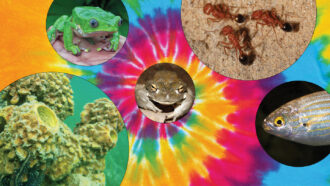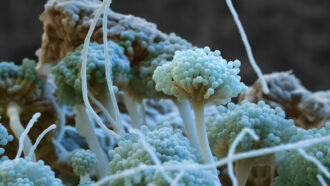
Deborah Balthazar was the Fall 2022 science writing intern at Science News. She has previously worked as a hyperlocal government reporter and a substitute science teacher. She holds a B.A. in biology with minors in English and chemistry from Caldwell University and a master's degree in science journalism from New York University.

Trustworthy journalism comes at a price.
Scientists and journalists share a core belief in questioning, observing and verifying to reach the truth. Science News reports on crucial research and discovery across science disciplines. We need your financial support to make it happen – every contribution makes a difference.
All Stories by Deborah Balthazar
-
 Animals
AnimalsThe Sonoran Desert toad can alter your mind — it’s not the only animal
Their psychedelic and other potentially mind-bending compounds didn't evolve to give people a trip.
-
 Animals
AnimalsThese are our favorite animal stories of 2022
Goldfish driving cars, skydiving salamanders and spiders dodging postcoital death are among the critters that most impressed the Science News staff.
-
 Math
MathThe metric system is growing. Here’s what you need to know
Science News spoke with a metrologist about the metric system’s latest update, which will help scientists interpret exceedingly big and small numbers.
-
 Animals
AnimalsA new book asks: What makes humans call some animals pests?
In an interview with Science News, science journalist Bethany Brookshire discusses her new book, Pests, and why humans vilify certain animals.
-
 Neuroscience
NeuroscienceRats can bop their heads to the beat
Rats’ rhythmic response to human music doesn’t mean they like to dance, but it may shed light on how brains evolved to perceive rhythm.
-
 Microbes
MicrobesHow fungi make potent toxins that can contaminate food
Genetically engineering Aspergillus fungi to delete certain proteins stops the production of mycotoxins that can be dangerous to human health.
-
 Humans
HumansHow to get a crying baby to sleep, according to science
Science has come up with a recipe for lulling a crying baby to sleep: Carry them for five minutes, sit for at least five more and then lay them down.